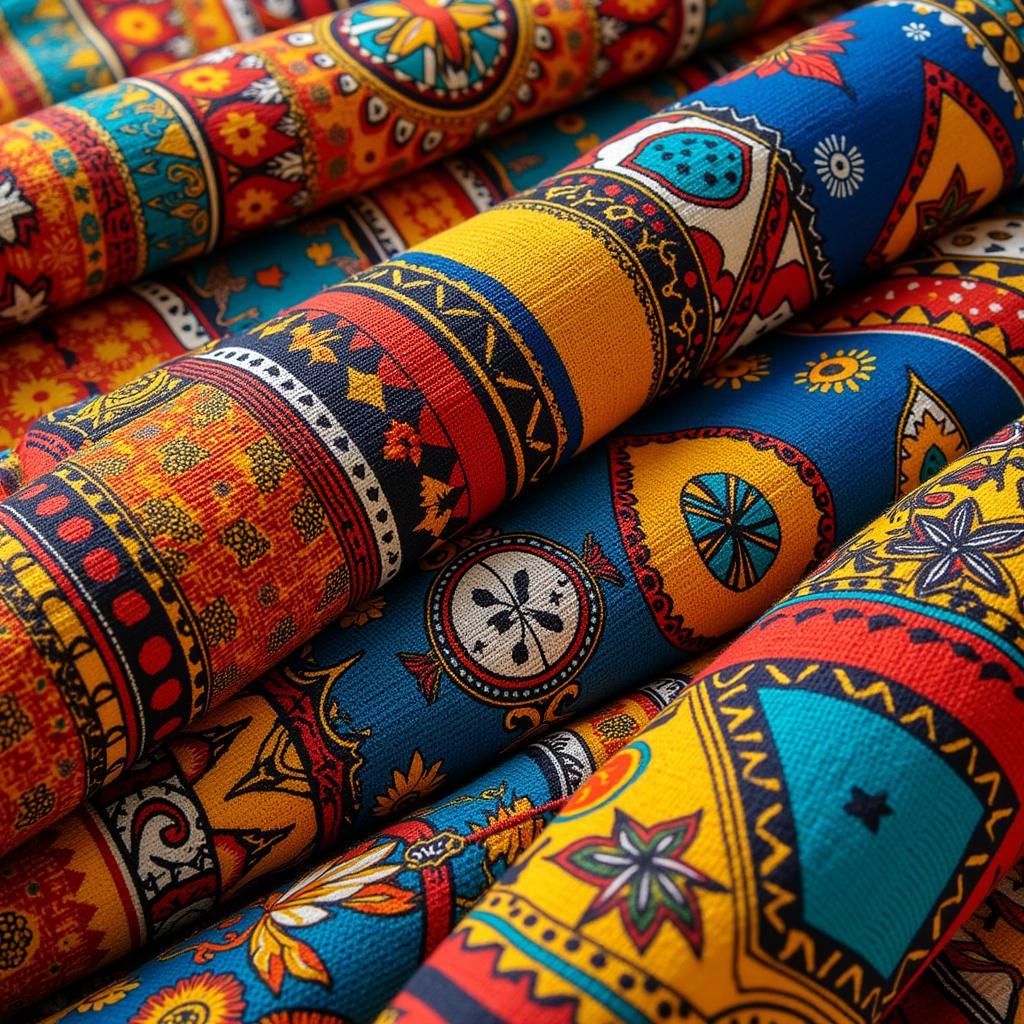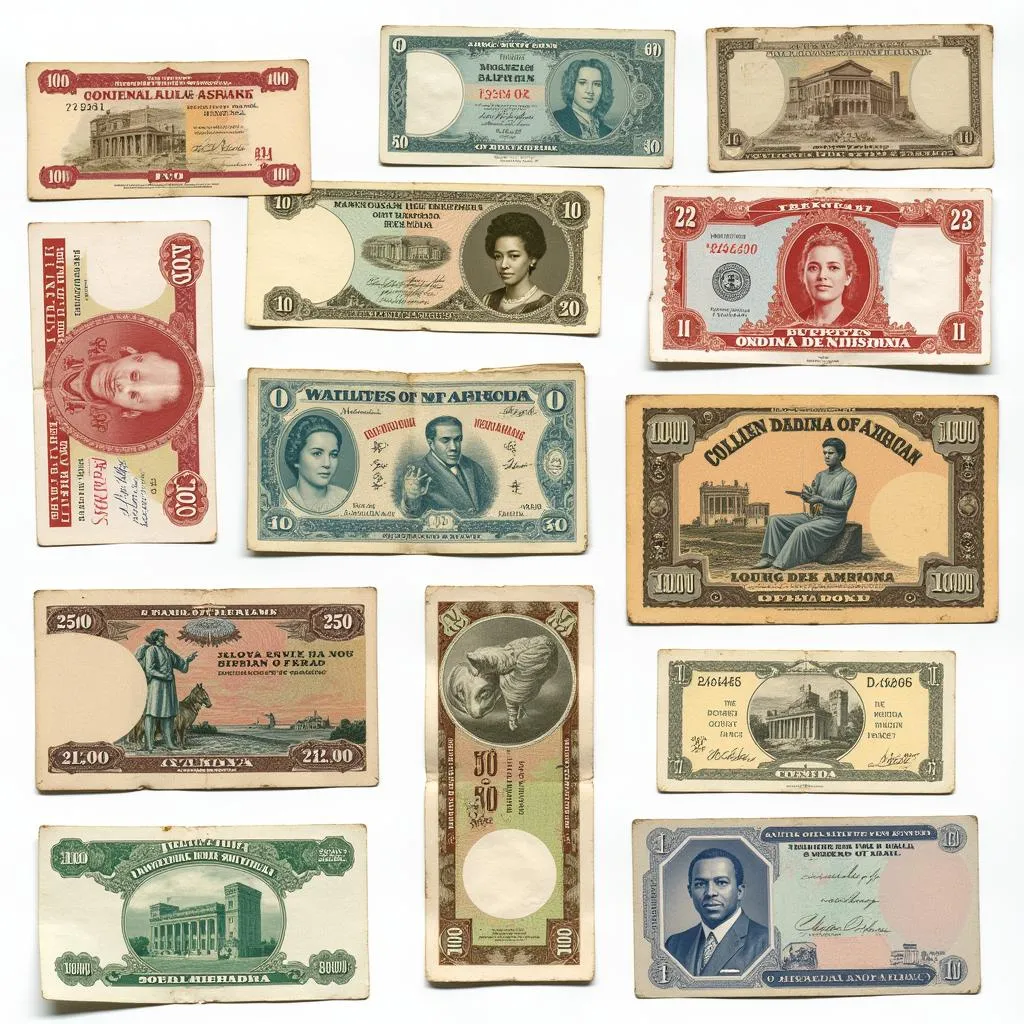African Clothing and Prints: A Deeper Meaning
African clothing and prints are more than just fabrics; they are vibrant expressions of culture, history, and identity. From the intricate patterns of Ankara to the flowing robes of the Maasai, each garment tells a story, reflecting the wearer’s heritage, social status, and beliefs.
Unveiling the Significance of African Prints
For centuries, African textiles have served as a powerful means of communication, conveying messages through symbolism, color, and design. These intricate patterns often represent proverbs, historical events, or spiritual beliefs, offering a glimpse into the rich cultural tapestry of the continent.  African Fabric Patterns and Meanings
African Fabric Patterns and Meanings
The Language of Colors in African Clothing
Color plays a pivotal role in African clothing, with each hue carrying deep cultural and symbolic significance. For example, red often represents vitality, power, and spiritual energy, while green symbolizes growth, fertility, and harmony with nature. Gold, frequently incorporated into royal garments, signifies wealth, prestige, and spiritual enlightenment.  Symbolism of Colors in African Clothing
Symbolism of Colors in African Clothing
From Everyday Wear to Ceremonial Garb: Exploring Different Types of African Clothing
African clothing encompasses a vast array of styles and garments, each tailored to specific occasions and cultural contexts. Let’s delve into some prominent examples:
1. Kente Cloth: A Tapestry of Royalty and History
Originating from Ghana, Kente cloth is a handwoven fabric renowned for its intricate geometric patterns and vibrant colors. Traditionally worn by Akan royalty and nobility, each Kente pattern holds specific meaning, often representing proverbs, historical events, or clan affiliations. African fabric uk
2. Bogolanfini (Mud Cloth): A Malian Legacy
Hailing from Mali, Bogolanfini, also known as mud cloth, is characterized by its distinctive earthy tones and geometric patterns. The fabric is traditionally dyed using fermented mud and plant extracts, creating a unique and symbolic textile often used for ceremonial garments and ritualistic purposes.
3. Maasai Shuka: A Symbol of Identity and Pride
The Maasai people of East Africa are known for their striking red Shukas, which are large rectangular cloths draped around the body. The vibrant red color holds cultural significance, representing bravery and strength, while the way the Shuka is worn indicates age, social status, and occasion.
The Global Influence of African Prints and Fashion
Today, African prints and fashion have transcended geographical boundaries, captivating the global stage with their bold aesthetics and rich cultural heritage. From high-fashion runways to everyday street style, African-inspired designs have become a powerful form of self-expression and cultural appreciation.
Renowned fashion designers like Taibo Bacar, Lisa Folawiyo, and David Tlale have played a pivotal role in showcasing the beauty and versatility of African textiles on an international platform, incorporating traditional craftsmanship with contemporary silhouettes.
Navigating the Cultural Significance of African Clothing
When appreciating and wearing African clothing, it’s essential to approach it with respect and sensitivity. Here are some key points to keep in mind:
- Research and Understanding: Take the time to learn about the history, symbolism, and cultural context behind the specific prints or garments you admire.
- Appropriate Attire: Be mindful of the occasion and setting when wearing African clothing, ensuring your attire aligns with the cultural norms and expectations.
- Supporting Ethical Practices: Opt for clothing made by African designers or brands that prioritize ethical sourcing and fair labor practices.
By engaging with African clothing and prints in a thoughtful and respectful manner, you contribute to the celebration and preservation of this rich cultural heritage.
Conclusion
African clothing and prints are a testament to the continent’s vibrant cultural tapestry, offering a captivating glimpse into the history, beliefs, and artistic expressions of its diverse people. From the intricate symbolism woven into Kente cloth to the bold hues of the Maasai Shuka, each garment tells a story, reflecting the wearer’s identity, heritage, and connection to their cultural roots. As we continue to embrace the beauty and diversity of African fashion, let us do so with respect, understanding, and a deep appreciation for the stories these garments tell.



